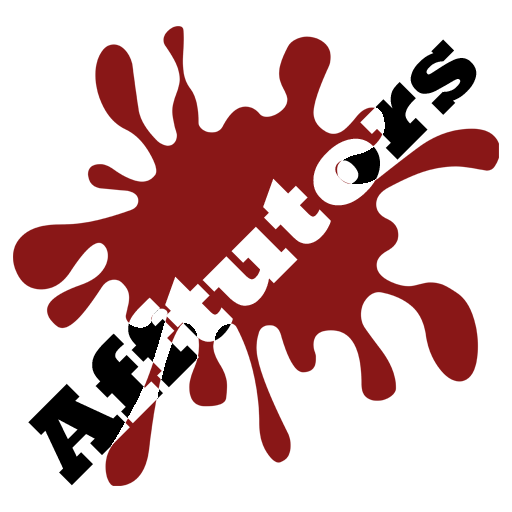The 15 most important technical SEO mistakes that affect your website and lead to its decline

If you are a website owner, you will hear this word “technical SEO mistakes” more than others for many reasons that we will talk about. Technical SEO is one of the most important things that make your website easy to browse and to be at the top of search lists constantly. And so that your website interacts with visitors to get a better user experience with search engines.
A simple example to explain technical SEO
Let’s say that if you wanted to read a book in a certain field at some point, the first thing you would do is determine the field of the book you want to read, and then you would search for the most reliable book among the rest of the other books.
After that, you will look at the shape and appearance of the book and whether it is printed well or not. Before you read the book, you will browse its index to see whether the content of this book is what you want or not.
This is a simple example to explain the meaning of technical SEO. On the one hand, it is a word that expresses the ease with which your site can be browsed by search spiders, which are responsible for browsing websites and knowing their strengths and weaknesses. On this basis, some websites rise in search engines and occupy the first ranks for many of the keywords they target.
On the contrary, if the technical SEO of a website is not good enough, the site may decline in search results due to its not being ideally prepared for search engines. Therefore, in this article, we will discuss technical SEO and learn about its sections and how to make your site ready for search engines through a list of tasks that we will give you, so continue reading this topic to the end.
Why is technical SEO important for your website?
Technical SEO is the cornerstone of digital marketing and the success of your online business depends largely on it, as it refers to improving the technical aspects of your site in order to increase the ranking of its pages and improve its results to appear more in various search engines.
Making the website faster and easier to browse for visitors and making it understandable to different search engines is one of the pillars of technical SEO for any website on the Internet.
The importance of technical SEO for the website
Specialized Website optimization works with the most significant and crucial parts of your webpage, which are slithering and ordering your webpage:
- Crawling your site refers to the ability of Google spiders to access your website and also access all of its content completely.
- Indexing refers to the ability of search spiders to collect information about your site so that they can display this information and its pages when your content matches people’s searches on the Internet.
SEO Sections
Knowing the SEO sections is one of the most important steps you should take before starting to prepare your website or company for different search engines. SEO is divided into three sections, which are:
- Technical SEO
- On-page SEO
- Off-page SEO
First: technical SEO
This type of SEO focuses greatly on improving the technical aspect of the website on the Internet, so that it can be easily accessed, indexed, and its content archived easily by Google search spiders, the efficiency of the website’s codes, and the speed of hosting response.
Second: On-page SEO or internal SEO
This type of SEO focuses on internal settings, configuring your site from the inside, choosing keywords, linking between different topics, and making it compatible with search engine requirements.

Third: Off-page SEO
This type is considered an important complementary part to make your site externally prepared for search engines, such as creating a backlink to the site. This type of SEO is very important for your site, its progress, and making it suitable for visitors.
An example of the importance of improving technical SEO for your website
You may wonder why technical SEO has become one of the most important types of SEO at the present time. We simply answer that technical SEO is actually more important than any other type of SEO, because simply no site can succeed without a strong success factor. In simple terms, the backbone of any site on the Internet is search engine optimization from a technical perspective.
The technical aspect is the structure of your site and without it the site collapses and cannot make any progress in the near or distant future. Imagine that you wrote the best content in the world on your site and that this content you think everyone should read and everyone should browse your site and millions of visitors may be waiting impatiently for the delayed notification from your site regarding the new article and the moment comes and visitors enter your site but unfortunately it happens that the web page for the article took more than 10 seconds until the article was fully loaded.
If this happens, you may lose all visitors to your site because every second it takes to load a web page increases the rate of visitors leaving your site and thus increases the bounce rate, and this is bad for the site, but if you prepare technical SEO for all pages of your site, you will be safe from such circumstances, and here lies the importance of technical SEO for any site on the Internet.

If this error occurs as in the image above, then at that time it does not matter how great your content is with search engines because your site does not work well, you will simply lose all your visitors. This is just an example of the importance of technical SEO for your site, and without it, no other features on the site matter, so in the next paragraph we will talk about the most important aspects of technical SEO.
Checklist to make your website technical SEO friendly
There are some key factors that you should pay attention to while optimizing your site with technical SEO.
1- Create a clear site hierarchy.
One of the easiest ways you can boost your technical SEO is to design a good website structure. The clearer your website structure is, the easier it will be for Google spiders to crawl and index your site.
This is one of the main things that top technical SEO professionals use to keep website navigation clear and easy by creating a sitemap or site hierarchy. Here is an illustration to help you keep track of all the different pages on your website.
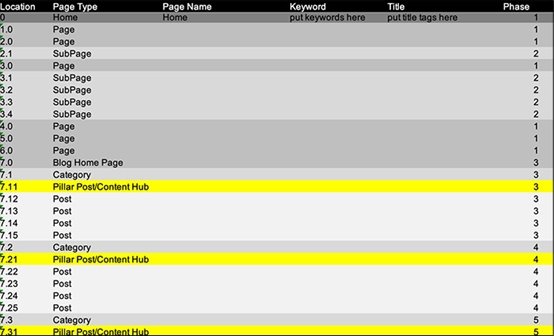
This is an example of a sitemap template. As you can see, each page has a data column “Page Type”, “Page Name”, “Keywords”, and “Title” (this data is more related to On Page SEO, so we will cover that information in detail in another article. What is important to look at now is the Site column.
The Location column indicates where the page is located in relation to the other pages around it. You will notice that subpages have the same base number as the main page, and are numbered sequentially. For example, page #3 has 4 subpages (3.1, 3.2, 3.3, and 3.4). All of these pages are located under your main page, which is always on the site (see image again).
This example illustrates the basic sequence of the site and shows that creating a structure for your site will make you work better, and will help you track the layout of your website and thus you will gain a positive point in improving your site’s SEO.
2- The site is mobile-friendly.
It is not only Google that cares about the site’s mobile responsiveness, but also Bing and other search engines that examine sites to see how mobile-responsive they are.
You can check if your site is mobile-friendly by using the following tool: https://search.google.com/test/mobile-friendly
Make sure that your site is mobile responsive because 70% of all searches are done through smartphones, so Google and search engines have modified and made crawling spiders dedicated to mobile only, Google bot.
3- Site speed
Certainly in this era everything is done quickly and so is your site. Visitors do not want to wait long for your site pages to load. The more time it takes to load your site pages, the greater the chances of visitors bouncing and quickly leaving the site. For this reason, it is taken into consideration that the site speed is one of the most important settings in the technical SEO of your site. You can make your site speed better than other sites by using:
1- Fast and responsive template for all mobile devices if you use ready-made cms such as WordPress or Wix.
2- Using compressed images in articles also helps make your pages load faster.
3- Your choice of hosting for your site is also a factor in the speed of your site.
4- You can also increase the speed of your site by increasing the browser cache and minifying JavaScript codes.
5- Use some plugins that help speed up the site.
6- Compress the site codes and delete unused CSS codes
4- Fix site errors and remove duplicate content.
The presence of errors on the site, some invalid pages, the presence of some broken links, incorrect redirections, or even missing pages on the site, all of these things must be taken into consideration in the step of fixing site errors and removing duplicate content. In any case, you must deal with the 404 error.
These pages are one of the main reasons that lead to a high bounce rate on the site and visitors leaving your site and going to another site. Also, search engines do not like your site to have errors or missing pages. If you find one of these pages, you must know how to fix it.
Make sure you are using 404 redirect pages correctly, as these are always redirects to a new page, and you can control this easily, so you can convert your invalid pages to valid pages with ease, thus avoiding many errors.
Examples of technical SEO mistakes you should consider
1- Not using an (SSL HTTPS) certificate to protect your site
SSL certificate is an abbreviation for (Secure Sockets Layer) and is used by websites to secure traffic between browsers and websites. It is a protection system that works to encrypt the process of exchanging information between web pages on the Internet.
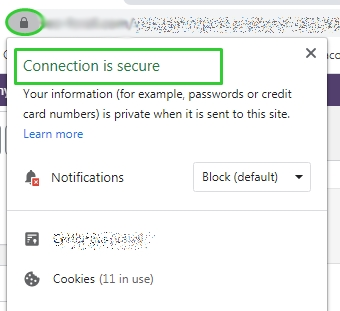
You can tell if a site uses an SSL certificate by looking at the URL. If it says “HTTPS” it is secure.

2- There is a problem with the meta tags codes .
Meta tags are among the best tags that help you write phrases that help search engines determine the topics of the different pages on your site and link them to keywords and phrases that have a high search value by visitors. Therefore, creating the correct title tags or meta tags means that you will choose keywords related to the topics on your site in order to create a unique and clickable link for visitors to your site if you appear in advanced search results, which improves the SERPS of the site pages.
This is what good meta tags or descriptions give you, as they are an additional opportunity to make your site content rich in semantic words or descriptive phrases in an excellent way. It is important that these codes are exclusive to you, that you create them specifically for your site and do not copy them from anywhere else, because Google search engines will recognize any description of your site if you have quoted it from any other site, and this may harm your site because based on the keywords to appear in search results suggestions, it may sometimes show that the search terms do not match the semantic words in the results associated with them.
In order to create good meta tags, you only have to put the semantic words and descriptions that include the most appropriate keywords for your site’s topics, and that they are of the correct length, and that you avoid repeating words as much as possible. It is important to realize that meta tags are one of the most important factors in building correct technical SEO for sites.
But you should know that every rule has exceptions. In some fields, such as the field of e-commerce, you will not be able to create exclusive and unique meta tags for each article on your site, so you will need to provide a distinctive value on your site’s main pages in order to maintain visitor satisfaction and win a distinctive visitor experience. Even if you have good meta description data, you must make the meta tag codes on your site good as well, because this will have an excellent impact to the maximum extent.
The most common mistakes in creating meta tags that may harm your site’s technical SEO:
1- Duplicate titles and meta tags
It is simply that there are two or more pages on the site with the same titles and the same descriptive descriptions, which makes it difficult for search engines to determine the extent of the connection between them and the topic or semantic word correctly, and thus it will be difficult for either page to be found in the search engine ranking results.
2- Lack of H1 titles on the site pages
H1 tags help search engines identify the titles of topics on your site, so if there are no H1 tags on your site, there will be a gap for search engines in understanding your site.
3- Lack of meta descriptions
Meta descriptions for your site’s articles or pages are the focus of search engines’ understanding of your topics and therefore also express the relevance of the article to its semantic keyword, which encourages users to click on your site’s results. Therefore, if the short description of your site’s pages is missing or non-existent, click rates on your site in search results may decrease.
4- Lack of ALT titles for images
Alt text titles are the titles for the visual content on your site, such as images and videos. Without them, the visual content in your site’s articles will lose its ranking in search engine results for images and videos as well.
5- Repeated presence of H1 or title tags
Not having H1 tags is a problem and too much of something is not good either, so repeating H1 titles on the site or repeating title tags and making them similar on a specific page of the site simply means that you will lose any chance of ranking in the search results for other keywords related to these titles, and this is something you definitely do not want because it is an important factor of technical SEO, so it is important to follow H1 titles and not repeat them or repeat title tags as well.
3- There is a problem with the speed of the site and the site takes longer than necessary to load.
The presence of slow website speed, such as slow page loading speed or increased response time to visitor requests, is a serious problem, especially at the present time after Google’s updates, which have confirmed that website speed can have a negative or positive impact.
Page speed is crucial not only for improving search rankings but also for better user experience. A fast site can significantly improve the value of a visitor staying on the site pages, unlike a site that is slow to load its pages. According to statistics, “a one-second delay in page load time causes a 7% decrease in the duration of each visitor staying on the site.”
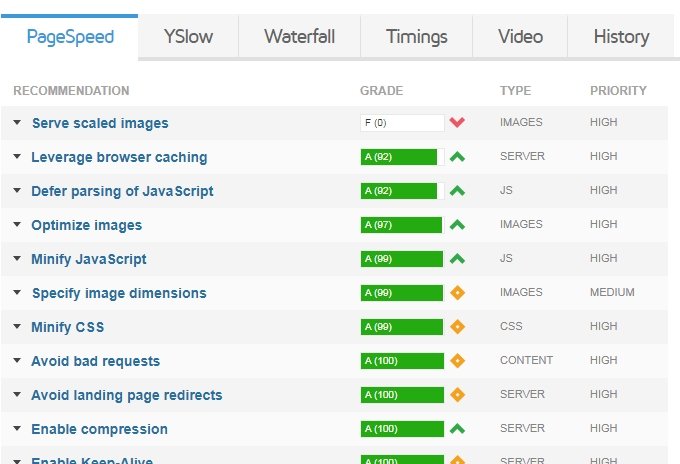
Page speed has been a ranking factor on Google since 2010 for desktop searches and has recently become one for mobile searches. Fast page load times are still an important differentiator for websites. A fast website should load in under 3 seconds on desktop and under 1 second on mobile. The most important points you should pay attention to to improve your website speed issue are:
- Page interface loading speed (HTML):
The time it takes for a page to be fully displayed by the browser should be as short as possible, as speed directly affects the site’s rankings in search engine results.
- Delete uncached JavaScript and CSS files:
This issue may be related to your site’s loading speed, and occurs if the browser cache is not set at the time of responding to visitors’ search requests.
- Unclassified JavaScript and CSS files:
This issue revolves around minifying JavaScript and CSS files. In an easy way, remove unnecessary codes and some unimportant comments to improve page loading speed.
To correct these errors, we will provide you with some solutions and steps that, when followed, will lead to a change for the better in the speed and performance of your site:
- It is important to compress the JavaScript and CSS codes on your site, as this will definitely make your site faster, because less code will make great improvements to many websites that have a speed problem.
- Compressing and reducing the size of the images you use for topics on your site helps you reduce the total time to load the site by three seconds. The importance lies in the fact that improving the appearance of images on your site will help you progress and gain a distinctive visitor experience and reduce the size of the site.
- Replace add-ons that may be slowing down your site. When you create a performance report in GTmetrix , click on the Waterfall tab to see which parts of your site take the longest to load. You can also identify resource-intensive add-ons on your hosting that take the longest to load your site.
4- You have a problem with duplicate content.
Duplicate content is the biggest problem you may face on your site and it has a serious impact on your site’s technical SEO and its progress as well because in this case you are harming yourself because in this case Google will have a very good reason to penalize your site because of the presence of duplicate content because for search engine policies duplicate content is often a sign of plagiarism, and even when the content is not, Google does not know what to determine when two pages or blog posts share identical content and when it increases and increases it turns into black hat SEO.
Read also: What is Black Hat SEO and how it can affect your site

Duplicate content is not an easy problem and affects the site very badly, but at the same time it is easy to avoid. All you have to do is make sure that every page and every article on your site is exclusive and unique and has no similarities.
If you find that you are suffering from this problem, the quick and effective solution for you is to make a 301 redirect to protect your site from any potential damage due to duplication.
Some other mistakes that may harm your site’s technical SEO:
1- The presence of 404 error pages: In other words, when the visitor clicks on a link to a page on your site, his request to go to that page is not met, and this is the reason for the error page appearing. This problem may lead to the loss of some visitors to your site, but in the long run it may harm your site’s classification and ranking in search engines.
The purpose of error pages is to draw the attention of the site owner to the fact that there is a disabled page that cannot be accessed. This can also apply if there is anything wrong with the site that prevents the engine from crawling to a specific page and presenting it to visitors quickly.
2- The presence of broken internal links (internal link errors) and these links lead users to the different pages of the site. If there are broken internal links, the requested page will not work, and this matter may harm the UX (i.e. user experience) and SEO as well.
3- The presence of broken external links.
4- Permanent redirects and temporary redirects.
– Incorrect internal images: This is considered an error when the image file does not exist, or when the URL for the images is incorrect.
6- Pages that have not been crawled and indexed. This happens when any page on your site cannot be accessed due to one of two main reasons:
– Your site’s response time to visitor requests exceeds five seconds.
– Your server refused to access that page.
7- Your site is not compatible with phones, which is one of the most important technical SEO factors.
8- Google search engines are unable to crawl and index your site pages properly.
9- There is an error in the robots.txt and sitemap.xml files, or they are missing or incorrectly formatted.
10- The presence of weak content that does not provide good benefit to visitors.
11- Archiving pages that should not be archived or indexed. All pages of your site should be indexed without exception.
Tools to detect technical SEO errors on websites
SEMrush Tool :
SEMrush test may reveal very complex JavaScript or CSS files, so we highly recommend you use this tool, which you can access by clicking on it from here ( semrush ).
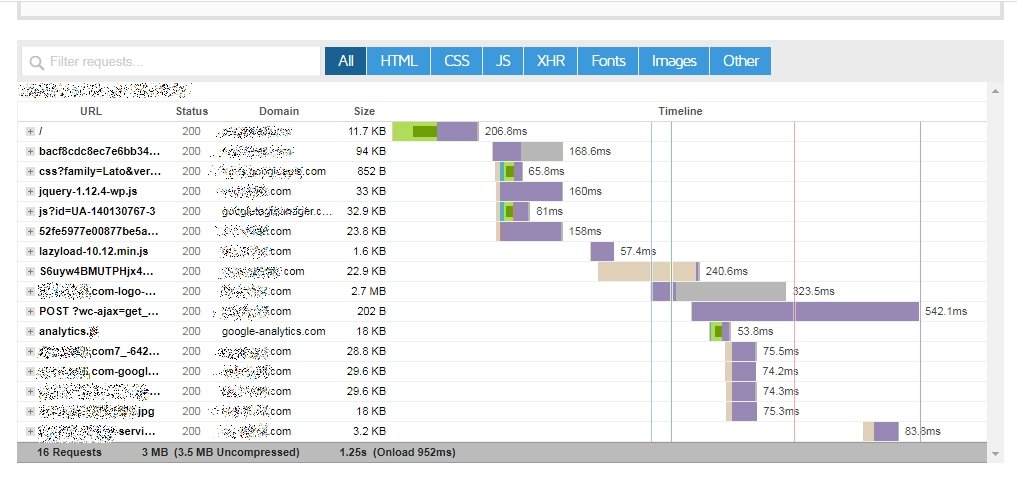
GTmetrix website:
It is an excellent site that helps you know the performance of your site and whether there are some problems with slow loading on some pages or the time taken to load your site and other things that you will be happy to know when you visit the site and you can access it by clicking on it from here ( gtmetrix ).

Opportunity Pingdom:
It reviews and audits the speed and performance of your website. You will know how long it takes for your website pages to load, and if they are slow, you will know what is slowing them down and how to fix speed problems on your website. You can access it by clicking on it from here ( pingdom ).
Imagify website:
This site is very useful for improving the technical SEO of your site because it compresses and reduces the size of the images you use on your site, which increases the optimization of your site ( technical SEO) and its speed. You can access it by clicking on it from here ( imagify ).

Add W3 Total Cache if you are using WordPress”
It is one of the favorite plugins for many website owners to improve page speed on WordPress. It improves website performance and increases technical SEO of the site by minifying JavaScript, CSS and HTML files, allowing gzip compression, and of course taking advantage of caching to make your site load faster. All of this, of course, contributes to the technical SEO factors of your site and you can access it from here ( w3 total cache ).
These points mentioned in the article are very necessary for success on search engines by mastering technical SEO sites, through which you can attract readers and actual customers in an easy way. If you want to prioritize your efforts in creating your own site, make sure you pay attention to technical SEO factors first. After reading this article, share your opinion with us, and if you encounter any difficulty in any of these steps or any technical SEO site factors, do not hesitate to write a comment and we will respond to you as soon as possible.
If you cannot examine all the previous technical SEO factors, you should in this case prefer some over others. In the case of comparing internal and external factors, the most important part is improving the technical SEO of the site from the aspect that appears to the visitor who enters the site, as this is more important than some other factors.
